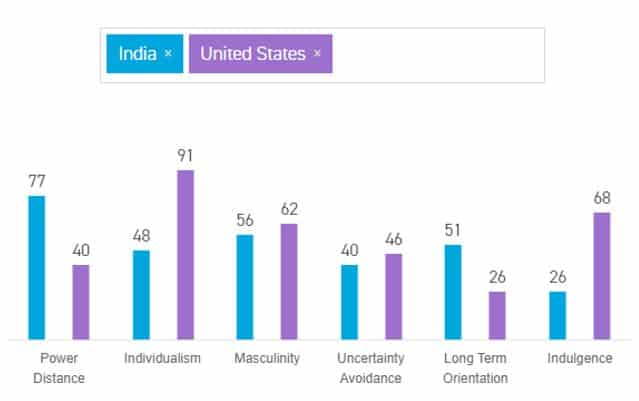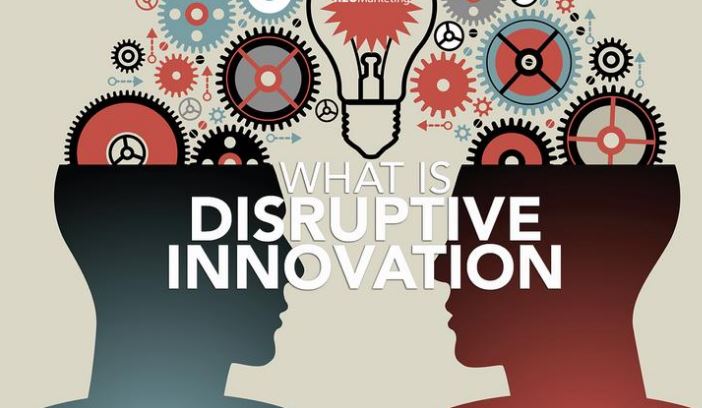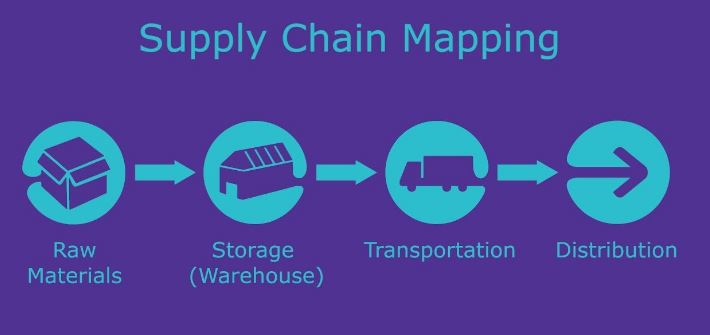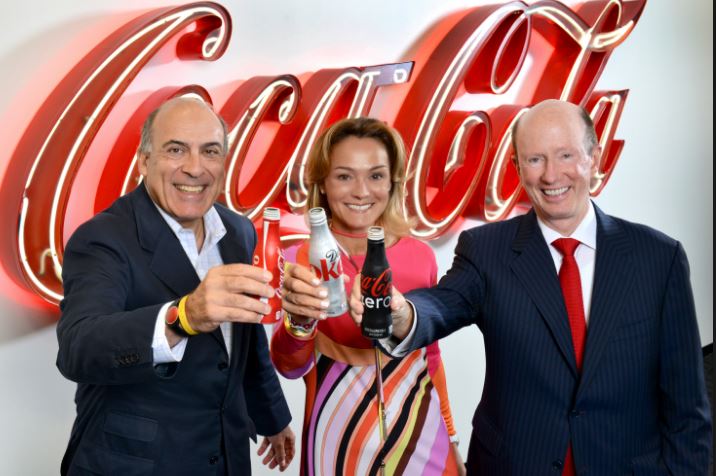Cross-Cultural Management at McDonald’s Assignment
Cross-Cultural Management Assignment – McDonald’s is the largest single-brand chain of restaurants globally. Since its establishment, it has offered various products such as soft drinks, cheeseburgers, hamburgers and potato chips in its menu with various additions and phasing out over time. McDonald’s has overtime spread across the world and overcome significant cultural differences between its home country, the United States and its new markets.
However, its expansion into India is likely to face more significant challenges due to the magnitude of cultural differences between the United States and India. Through the application of Hofstede’s cultural dimensions, the most significant differences include power distance, indulgence and individualism. The high acceptance of inequality between people, the restrained culture and collectivism of the Indian society are some of the challenges that McDonald’s is likely to face.
Further, through the application of Trompenaar’s culture dimension concept, the significant challenges include particularism and diffuse Indian culture which does not have clear boundaries on private and public places. However, the recommendations are that through adverse selection marketing, concentration on innovation, improvement of products quality, and staff satisfaction, the challenges can be overcome.
One of the largest restaurant franchises currently in the globe is McDonald’s. Having been started in California as a drinks and food stand in 1937 by Patrick McDonald, it has expanded to approximately 122 countries across the world (Grant, 2010). The McDonald’s Restaurant has mastered the art of franchising and is presently the largest restaurant chain with a single-brand and furthermore, the largest global restaurant operator. In the early years of operation, McDonald’s focused on selling hamburgers, apple pies, potato chips, coffee, cheeseburgers, and soft drinks. However, today several menu items have been phased out over time with several others brought on board.
According to Grant (2010), McDonald’s has also beaten all odds and ventures into nations with an entirely different culture with the United States which is the home country. However, there are other countries that the restaurant has yet to establish franchises. One of the countries that McDonald’s therefore ought to open the business in India. Although there is a significant difference in culture such as leadership, communication, staff handling, marketing and ethics, India has a substantial market that McDonald’s can exploit (Ferraro and Briody, 2013).
Cross-Cultural Management Findings
For McDonald’s Restaurant to take on the Indian Restaurant market, it has to overcome the challenges that are brought on board by the significant differences in culture between the home country, United States and India, the new and prospective market (Trompenaars and Hampden-Turner, 2011). Through the application of theories and concepts of Hofstede’s dimensions of culture and the Trompenaar’s dimensions of culture, the challenges that may emerge due to differences of culture can be analysed (Deresky, 2017).
Migliore (2011) states that the most significant cultural dimensions that McDonald’s restaurant franchise is likely to face in the process of opening the business and adapting in India are the differences in power distance, individualism and indulgence (See Appendix). One of the culture dimensions with the most significant difference is power distance. It elaborates the extent to which the less commanding members of the society in organisations and institutions in a nation, such as India, agree and expect that power is unequally spread.
The power distance score for India and the United States is 77 and 40 respectively and therefore; there is a difference of 37. This implies that McDonald’s is likely to have a difficult time in marketing their products and services in India based on the fact that the inequalities of the society are endorsed by the populace as much as the leaders of India do (Sriramesh, 2013).
The other significant cultural dimension difference that McDonald’s is likely to face is Individualism (See Appendix). According to Tu, Lin and Chang (2011), individualism is higher in the United States as compared to India. Individualism is the interdependence degree society can maintain among its members. The United States and India scores are 91 and 48 respectively. There is a difference of 43 between the two countries.
The United States is an individualistic society, and most people only take care of themselves and their direct families hence it is easy for the McDonald’s restaurant to influence individual families. This is primarily because individualism means that the standards of ethics are established by individual families and not the society (Tu, Li and Chang, 2011). However, the Indian society is a highly collectivist society. Most ethics and related-decisions are made on a society level. This culture is likely to create a challenge for McDonald’s restaurant as it is easier to influence a family as opposed to an entire society.
Another Hofstede’s cultural dimension of significant difference between the United States and India is the indulgence. According to Pandey and Devasagayam (2015), indulgence is the degree to which individuals attempt to control their impulses and desires based on the manner in which they were born. The score for indulgence in the United States and India is 68 and 21 respectively as below.
A significant difference of 47 exists between the two countries. In the United States, children, adolescents and adults are highly indulgent hence communication and negotiation with various stakeholders is a readily achievable objective. However, Indians have a restrained culture, especially in food consumption. For instance, it will be a considerable challenge for McDonald’s to have Indians populace indulge in the consumption of beef.
This is because individuals have been brought up to respect cows as members of the family. Cows in Hindu are seen as animals that are motherly giving. All products with beef related products would mount a massive challenge in convincing Indians to be stakeholders, let alone communicating or negotiation with them.
On the other hand, the Trompenaar’s cultural dimensions that can be applied in analysing the difficulties McDonald’s may face in setting up business in India includes Universalism versus Particularism and Specific Versus Diffuse Cultures (Dickson et al. 2012). In the United States, leadership decisions are taken without situational context regard.
Therefore, McDonald’s managerial decisions are easily made in the United States as the concentration is on the legal contracts. That is universalism. However, India focuses on particularism which means that the concentration is more on personal relations. Leadership decisions are highly likely to be difficult in the making in India due to the focus on personal relations as opposed to legal contracts.
Furthermore, according to Katan (2014), the specific versus diffuse culture dimension is significant between the United States and India. Staff handling by the McDonald’s restaurant in the United States is easy as borders, distinctions, and private and public spaces are separated. For instance, the relationship between subordinates and their bosses are prohibited. Therefore, there are specific cultures in the United States that makes the staff handling easier for McDonald’s.
On the other hand, staff handling in India is most likely to be a challenge as the culture is diffuse. This means that private and public spaces do not have a clear border or distinction. More so, work relationships are allowed to extend beyond that to personal relationships. Employees and their superiors are most likely to be in each other’s life aspects beyond McDonald’s. This is most likely to make it challenging to handle staff as connections between the subordinates and bosses may lie beyond the working relationship.
Conclusion Cross-Cultural Management
McDonald’s expansion into India is most likely to face challenges due to a significant difference in culture. Cultures are very different between McDonald’s home country, the United States and India. Through the application of Hofstede’s dimensions of culture, indulgence, individualism and power distance are the most significantly different between the two countries (See Appendix). McDonald’s face the challenge of indulgence in India as Hindus are brought up believing beef should not be taken. Hence, all products related to beef are less likely to be served in India. More so, India is more of a collectivist nation than an individualistic one.
Most decisions on ethics, therefore, depend on society viewpoints. Thus, as opposed to the United States, McDonald’s is less likely to influence the people whose ethics rely on the society as opposed to an individual family. Further, power distance which elaborates on the inequality of people in the society is high in India, which makes it difficult in convincing people to Purchase McDonald’s products and services through marketing.
On the other hand, Trompenaar’s dimensions of culture which could have significant challenges on McDonald’s expanding into India includes specific versus diffuse cultures and universalism and particularism. Unlike the United States, India does not have clear borders on private and public spaces, and therefore, handling of staff would be difficult for McDonald’s as work relationships extend to personal relationships.
More so, leadership decisions would also face challenges as unlike in the United States, India focuses on personal relations as opposed to legal contracts in performing operations and making judgments. Indulgence, power distance and individualism are possible to influence over time. However, particularism and diffuse cultures would need more than just McDonald’s willingness to transform the dimensions as they border on government-based responsibilities.
Recommendations
For McDonald’s to overcome the challenges it is likely to face in setting up business in India; the following recommendations have to be carefully followed. According to Lian, Ferris and Brown (2012), one of the ways of reducing power distance in India by McDonald’s is ensuring that there is a reduction in errors, quality of services and products is improved, and there is a satisfaction of safety and staff members. More so, draconian and autocratic relationships should be eliminated and more premiums placed on collaboration between the employees and their supervisors. This will allow evenly distributed power and a comparatively lesser emotional distance between supervisors and employees.
For McDonald’s to excel in India, Individualism has to be promoted as opposed to collectivism. The culture of collectivism can be transformed through promoting innovation and high individual responsibility level. According to Zhang, Liang and Sun (2013), either technological or food innovation can dismantle the idea of collectivism as people are drawn towards personal needs rather than collective wants. Individualism will allow some competition degree amongst people hence decisions and ethical standards being decided individually rather than by the society. This would allow McDonald’s to penetrate the Indian market easily and to have a higher degree of influence.
Furthermore, indulgence can be heightened through constant adverse selection marketing. According to Er-li (2010), this kind of marketing allows the seller and the buyer to have information on the product which is not matching. With time, people in India may find themselves taking all kinds of products in the McDonald’s restaurant.
References
Deresky, H. (2017). International management: Managing across borders and cultures. (9th ed.) London. Pearson.
Dickson, M. W., Castaño, N., Magomaeva, A., & Den Hartog, D. N. (2012). Conceptualizing leadership across cultures. Journal of world business, 47(4), 483-492.
Er-li, C. A. O. (2010). Channel partners selection and drive based on adverse marketing [J]. Science-Technology and Management, 2, 019.
Ferraro, G. P., & Briody, E. K. (2013). The cultural dimension of global business. Upper Saddle River: Pearson.
Grant, E. (2010). Might makes mcright: McDonald’s corporation’s trademark strategy. J. Contemp. Legal Issues, 19, 227.
Katan, D. (2014). Translating cultures: An introduction for translators, interpreters and mediators. Routledge.
Lian, H., Ferris, D. L., & Brown, D. J. (2012). Does power distance exacerbate or mitigate the effects of abusive supervision? It depends on the outcome. Journal of Applied Psychology, 97(1), 107.
Migliore, L. A. (2011). The relation between big five personality traits and Hofstede’s cultural dimensions: Samples from the USA and India. Cross-Cultural Management: An International Journal, 18(1), 38-54.
Pandey, S., & Devasagayam, R. (2015). The effect of deals and moods on compulsive buying in young adults: A comparison of an indulgence culture and a restraint culture. Journal of Customer Behaviour, 14(3), 257-270.
Sriramesh, K. (2013). Power distance and public relations: An ethnographic study of Southern Indian organisations. In International Public Relations (pp. 181-200). Routledge.
Trompenaars, F., & Hampden-Turner, C. (2011). Riding the waves of culture: Understanding diversity in global business. Nicholas Brealey International.
Tu, Y. T., Lin, S. Y., & Chang, Y. Y. (2011). A cross-cultural management comparison by individualism/collectivism among Brazil, Russia, India and China. International Business Research, 4(2), 175.
Zhang, X., Liang, X., & Sun, H. (2013). Individualism-collectivism, private benefits of control, and earnings management: A cross-culture comparison. Journal of business ethics, 114(4), 655-664.
Cross-Cultural Management Relevant Links
Management Culture Dissertations
If you enjoyed reading this post on cross-cultural management, I would be very grateful if you could help spread this knowledge by emailing this post to a friend, or sharing it on Twitter or Facebook. Thank you.





